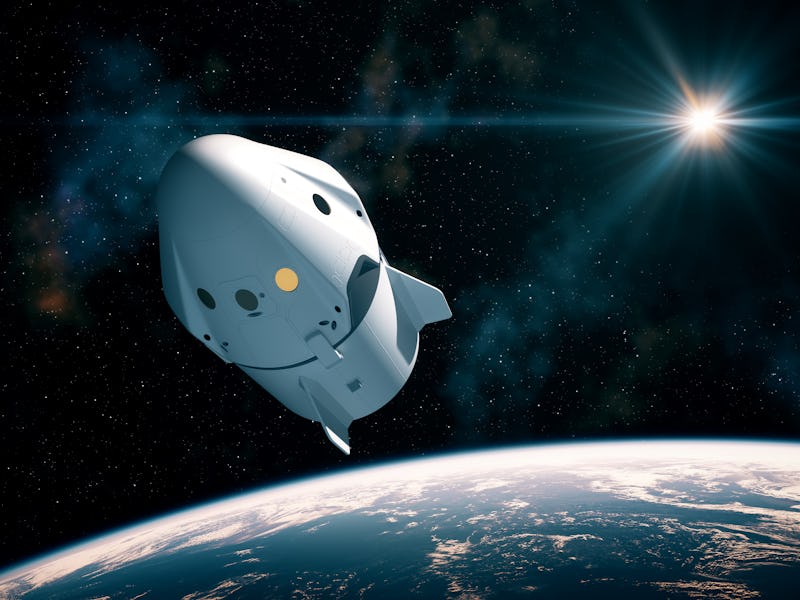Inspiration4: How much does a ticket to space cost?
Will the first fully privately funded orbital space mission make space more affordable for others?

Inspiration 4 will be the first all-civilian, all-private orbital space launch. That is, not just private citizens from outside the NASA astronaut corps, or flown using private, commercial space vehicles, but privately funded too.
Billionaire Jared Isaacman, the founder and CEO of Shift4 Payments, has essentially purchased the whole mission from SpaceX, who are providing the Falcon 9 launch vehicle and Crew Dragon space capsule that will carry Isaacman and his three crewmates to space for a three-day mission orbiting the Earth at an altitude higher than the International Space Station.
It’s not known exactly what Isaacman paid to make Inspiration 4 happen, but it’s certain to be more than the $250,000 ticket price for a sub-orbital flight with Virgin Galactic. But in the wake of Virgin Galactic Founder Richard Branson’s suborbital flight to space on July 11, and Amazon billionaire Jeff Bezos following suit on a Blue Origin rocket on July 20, it may be that the commercial space tourism market is finally heating up — even if the price for a ride to space remains a bit fuzzy.
How much does it cost to go to space?
Like purchasing a supercar, if you need to ask how much a ticket to space costs, you probably can’t afford it.
On the low end, Virgin Galactic offers a sub-orbital trip to the edge of space for $450,000, or a little less than two Lamborghinis. Of course, Virgin Galactic flights are currently grounded pending an FAA investigation into an error that occurred during Branson’s spaceflight — and the company’s failure to report to the regulator.
Bezos’s Blue Origin hasn’t officially disclosed the price for a ride on its suborbital New Shepard vehicle, but are likely to go ticket prices around the level of the private bids offered for seats on Bezo’s July 20 flight, Laura Forczyk, the owner and founder of the space analytics firm Astralytical tells Inverse.
“I think that is probably still in flux, what their final price will be, but it's probably along the lines of a million dollars,” she says, “or at least $500,000 per flight, per seat.”
Tom Hanks, however, may have spilled the beans — if he is telling the truth. An Insider article published on November 3 reports that when Hank was on “Jimmi Kimmel Live” the actor disclosed that Bezos approached him about flying up ahead of William Shatner for the price of “$28 million bucks or something like that.”
“And you know, it cost $28 million bucks or something like that,” Hanks said. “And I’m doing good, Jimmy. I’m doing good. But I ain’t paying.”
Isaacman was the only Inspiration 4 crewmember to pay his way — although two of his crewmates were selected in part due to their fundraising for the mission’s charitable beneficiary, St. Jude’s Children’s Research Hospital — but neither he nor SpaceX have disclosed what he paid. Some estimates based on what NASA is believed to be paying SpaceX to fly NASA astronauts to the ISS about Crew Dragon as part of NASA’s Commercial Crew program would put the price at $50-$55 million per seat on Inspiration 4, putting Isaacman in for a minimum of $200 million.
“ The difference between a multimillionaire and a billionaire,” Forczyk says, “That's what we're seeing.”
How does the cost of Inspiration 4 compare with NASA flights?
The $50 million figure for a Crew Dragon seat is a bit fuzzy, Forcyzk says, as NASA doesn’t disclose the exact costs, so analysts must use estimates. “We actually know that the price for Soyuz is like $90 million,” she says, referencing the Russian spacecraft NASA contracted to fly astronauts to the ISS after the retirement of the space shuttle and before the first Crew Dragon launch in May 2020.
It’s also difficult to compare costs for spaceflight between NASA and private space companies because the former carries a lot more overhead — operations and communications infrastructure — that private players do not. “NASA is, in a sense, subsidizing the commercial industry to spur activities in low Earth orbit,” Forczyk says.
Changes in the prices of ISS services to private space operators made in early 2021 to more fully recoup NASA costs help give a sense of how much subsidization and overhead NASA has been providing. For instance, the cost to bring one kilogram of mass onto the ISS jumped from $3,000 to $20,000.
“The International Space Station was never meant to be cost-effective,” Forczyk says.
How will Inspiration 4 change your chances of going to space?
The odds are against you ever being able to purchase an entire space mission in the mold of Jared Isaacman, but Inspiration 4 could well open the gates to a new era of space tourism that could bring the price of spaceflight down from being astronomical to something more akin to a college degree.
“Right now, in the near term, there is no incentive for these companies to bring down the price because the pent-up demand is there,” Forczyk says. But after the first wave of millionaires and billionaires take their rides to space, orbit, or around the moon, those companies will eventually need to attract new pools of customers, and opportunities for the rest of us might grow.
“A century ago, airline tickets were for the wealthy,” Forczyk says. “I believe that that spaceflight will follow that same model as per flight, and that a century from now, most people are going to be able to afford to buy a ticket to space. Maybe that won't help you and me, but maybe that helps my kids.”
Read more about the Inspiration4: